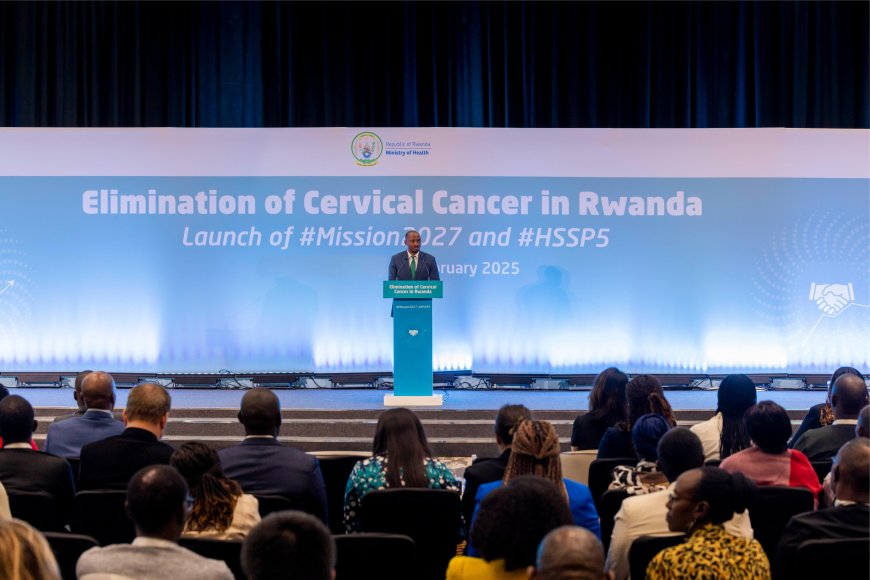Rwanda Unveils Ambitious Five-Year Plan to Revolutionize Healthcare by 2029
The Ministry of Health in Rwanda has launched a five-year program to achieve universal healthcare by 2029. The initiative focuses on enhancing health outcomes, reducing maternal and child mortality rates, and strengthening healthcare infrastructure through innovative strategies and technology.

In a significant initiative to revamp its healthcare system, the Rwandan Ministry of Health has revealed a detailed five-year plan to guarantee universal access to quality healthcare for all citizens by 2029. Launched on January 31, 2024, this plan outlines several ambitious objectives that markedly enhance health outcomes, lower mortality rates, and fortify the country’s healthcare infrastructure. Central to this strategy are five key pillars that tackle essential aspects of healthcare delivery, including boosting the number of healthcare professionals and utilizing advanced technology for epidemic prevention.

A Vision for Universal Healthcare.
Rwanda’s healthcare strategy focuses on universal health coverage (UHC), allowing every citizen to access healthcare facilities and enjoy full health insurance. This objective marks a notable increase from the existing numbers: 85% of the population currently holds health insurance, and 70% have access to healthcare services. By 2029, the government intends to eliminate these disparities to ensure that all Rwandans can access essential medical care.
The Five Pillars of Rwanda’s Healthcare Transformation.

1. Increasing the Number of Doctors (4×4 Program)
A key feature of the plan is the ‘4×4’ initiative, designed to boost the number of doctors in Rwanda significantly. The country currently has a doctor-to-population ratio of 1.2 per 1,000 individuals, falling short of the World Health Organization’s recommended guidelines. By 2028, the government aims to elevate this ratio to 4.8 doctors per 1,000 people, meeting global standards.
Rwanda aims to recruit and train 58,582 doctors over the next five years. Initiated in July 2023, the program focuses on supporting the well-being of healthcare workers, providing them with the necessary motivation and resources to deliver high-quality care. As a result, this increase in medical personnel seeks to reduce wait times, improve patient outcomes, and elevate the overall standard of healthcare services.
2. Modernizing Medical Infrastructure with Technology.
The plan's second pillar focuses on improving Rwanda’s healthcare infrastructure to meet the growing demands of its population. Over the next five years, the government aims to build 10 new hospitals and 23 health centers across the country. In addition, 30% of existing medical facilities will be renovated to incorporate modern technology, enhancing patient care services.
An example of a flagship initiative is the creation of Kigali Health City in Masaka, designed to be a center for advanced medical services and research. This state-of-the-art facility aims to draw in leading medical professionals and offer patients cutting-edge treatments.
3. Improving the Provision of Quality Medical Services.
The third pillar seeks to guarantee that all manageable diseases are treated within the country and that everyone requiring medical attention receives it. Particular focus will be given to maternal and child health, along with addressing non-communicable diseases (NCDs) like diabetes, hypertension, and cancer.
Rwanda seeks to significantly reduce maternal and infant mortality rates by improving access to essential services and the quality of care. The strategy also includes addressing the growing challenge of non-communicable diseases (NCDs), a significant factor in the country's health concerns.
The fourth pillar emphasizes enhancing Rwanda’s healthcare system's capacity to foresee, avert, and address epidemics. This focus is critical today, where infectious diseases can swiftly cross borders. The strategy involves employing sophisticated artificial intelligence (AI) tools to identify potential epidemics at an early stage and assess weather data to forecast disease outbreaks.
Rwanda seeks to reduce the effects of infectious diseases on public health and the economy by enhancing its epidemic preparedness. This proactive strategy will allow health authorities to take preventive actions and quickly respond to new outbreak threats.
5. Investing in Medical Research and Local Pharmaceutical Production.
The last pillar of the plan focuses on enhancing medical research and building local capability to manufacture vaccines and medicines. Rwanda seeks to lessen its reliance on imported pharmaceuticals by creating domestic industries capable of producing essential drugs and vaccines.
This initiative aims to reduce healthcare costs while securing a more dependable supply of medicines for the population. Furthermore, funding medical research will foster the creation of new treatments and enhance overall healthcare standards nationwide.
Expected Outcomes by 2029.
By the end of the five-year plan, Rwanda expects to achieve several significant milestones:
- Maternal Mortality: Reduction from 105 to 60 deaths per 100,000 births.
- Doctor-to-Population Ratio: Increase from 1.2 to 4.8 doctors per 1,000 people.
- Health Infrastructure Access: Increase from 70% to 100% coverage.
- Health Insurance Coverage: Increase from 85% to 100% of the population.
- Domestic Health Investment: Increase from 45% to 60% of total health resources.
A Broader Vision: Eliminating Cervical Cancer by 2027
Alongside its five-year plan, Rwanda has set a bold target to eradicate cervical cancer by 2027. This goal builds on the nation’s maternal and child health advancements, demonstrating its dedication to combating preventable diseases. Rwanda aspires to lead the world in the battle against cervical cancer by implementing extensive vaccination, screening, and treatment initiatives.
Conclusion
Rwanda’s five-year healthcare improvement strategy highlights the country’s dedication to universal health coverage and enhancing citizens' well-being. This initiative prioritizes increasing healthcare professionals, upgrading infrastructure, improving service quality, boosting epidemic readiness, and investing in local medical research and production, establishing a foundation for a healthier, more prosperous future.
 Kinyarwanda
Kinyarwanda
 English
English







































































